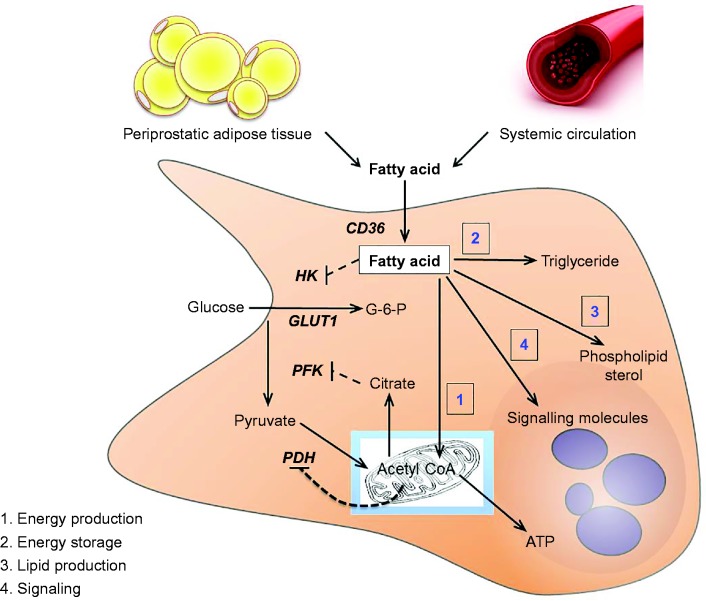Figure 2.
Schematic outlining fatty acid metabolism in the prostate. Fatty acids derived from the systemic circulation and the resident peri-prostatic adipose tissue are transported into the prostate epithelial cell where they undergo several fates including (1) oxidation in the mitochondria, (2) bulk storage as triglycerides contained within lipid droplets, (3) incorporation into phospholipids and sterol lipids to facilitate membrane production and (4) conversion to signalling molecules. Fatty acids can inhibit glucose metabolism through several mechanisms. Fatty acids inhibit the activity of hexokinase, and products of fatty acid oxidation, including acetyl CoA and citrate, are powerful allosteric feedback signals that suppress the activity of rate-limiting enzymes of glucose metabolism. ATP, adenosine triphosphate; CD36, fatty acid translocate/CD36; G-6-P, glucose-6-phosphate; HK, hexokinase; PFK, phosphfructokinase.

 This work is licensed under a
This work is licensed under a 